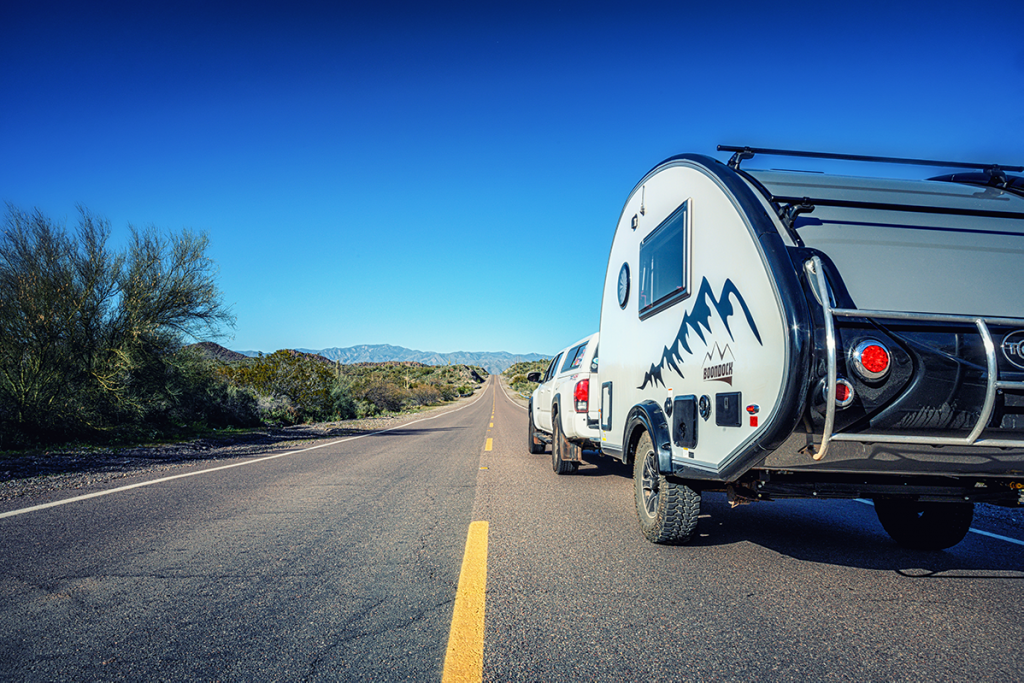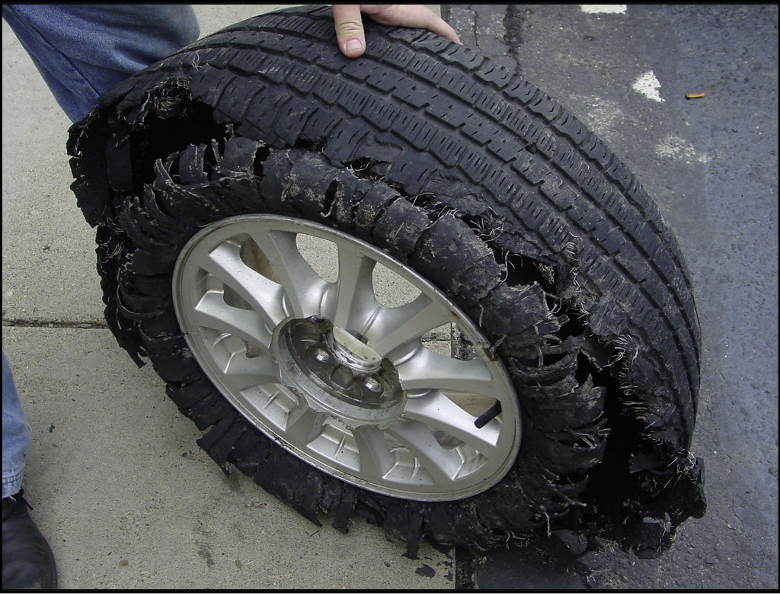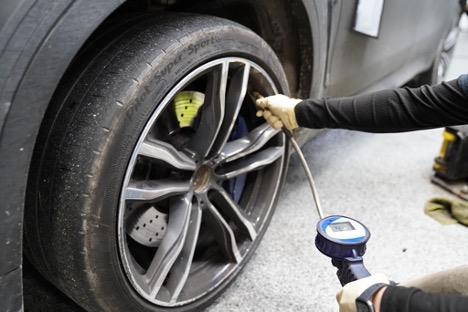There’s nothing better than hitting the road to go on a new adventure with your home on wheels. The last thing you want is for a tire blowout to derail your plans.
Tire blowouts aren’t just inconvenient — they can also be dangerous.
RVs are at a higher risk of tire blowouts than standard cars given the fact that they typically carry more weight than your everyday car and are driven with less frequency.
As the risk of a tire blowout is heightened, RVers need to be extra vigilant about putting measures in place to reduce the risk of tire blowouts. These measures affect both how you store your RV when not in use, and taking additional precautions when out on the road.
Below are some tips to help you avoid tire blowouts and have a safe and happy camping trip.
 Store your RV indoors when not in use
Store your RV indoors when not in use
Tires are designed to be driven on regularly. If they are not, this can cause tires to become susceptible to a deterioration process called dry rotting.
Dry rotting can cause the rubber that a tire is made out of to lose elasticity and become brittle. This means that when pressure is applied onto them when driving they have an increased chance of blowing out. This means there is an increased chance of a blowout when driving due to the pressure driving puts on the tire.
Deterioration via dry rotting happens naturally in all tires. However, the biggest catalyst to their aging, other than inactivity, is direct sunlight.
Therefore, you want to store your RV indoors and in a place where the tires will not be exposed to direct sunlight (even if it comes through a window).
If you do not have the option of storing your RV indoors, you can get an opaque covering for your vehicle. This covering should be large enough to cover your tires if draped over your RV.
Ensure that your tires are always at their optimal pressure
Driving on underinflated tires can contribute to blowouts. Underinflation shifts pressure from the tread of the tire (the part of the tire that is in contact with the ground) to the sidewall of the tire (the part of the tire perpendicular to the ground).
Tire sidewalls are not designed to take this extra pressure, and doing so for a long period of time will cause them to break. This is what blowouts ultimately are.
Tires naturally lose 2-3 PSI of pressure every month of inactivity — or for every 1,000 miles driven. You should therefore check your tire pressure and inflate your tires every time one of these two milestones is passed.
Checking your RV and towing vehicle’s tire pressure before heading out on your trip is always recommended to avoid blowouts. This is especially important of you are planning to travel somewhere that is remote. You can check your tire pressure with a tire gauge that costs around $10. Tires can be filled with air at many gas stations.
Make sure that your RV is not overweight before you set off
All vehicles have a maximum weight that, if exceeded, can increase the chances of doing damage to your tires.
You can find out this maximum weight in your vehicle’s manual. The figure that you want to look out for is the vehicle’s “Gross Combined Weight Rating” (GVWR). This refers to the maximum weight a vehicle can take, including all the things that are in it – both passengers and cargo.
If you are driving with a trailer, you need to look out for your vehicle’s “Gross Trailer Weight Rating.” This refers to the maximum weight that a vehicle can safely tow, including the trailer, tow, and everything in the trailer.
If you are worried that your RV may be overweight, you can pay to have it weighed at a truck weighing station. These can be found regularly along highways and generally charge around $20-30 to weigh your vehicle.
Choose the right tires for the type of trip you are taking
Driving on the wrong type of tire for your terrain can also increase your chances of suffering a blowout.
Here are the best tires for the most common types of terrain that you will likely travel on when RVing:
If you are traveling for long distances on highways, then your best bet is low rolling resistance tires. These lower the amount of friction and heat produced when traveling at high speeds, which in turn lowers the chances of suffering a blowout.
- If you are traveling off-road, or on unpaved roads, for long distances, then you want to go for 12 ply tires. These tires have more layers to them than standard tires and are therefore more durable to bumps and debris.
- If you are traveling on a combination of terrains then all-terrain tires are always a good bet.
- It’s also worth remembering that if you are traveling on all-terrain tires on the highway, that you should take breaks every two hours to stop your tires from overheating.
- Overheating tires causes the pressure in them to increase to the point where they might blow out. This is particularly problematic on hotter days.
Make sure that you are not driving on tires more than six years old
Given that tires naturally deteriorate over time, you should never travel on tires that are more than six years old.
You can tell the age of a tire by looking at the numbers on the inside of a tire’s sidewall. The final two numbers refer to the year that they were manufactured.
Below is a video explaining this in more detail:
This article was written by Mike Skoropad, CEO of United Tires.
Recent Articles







